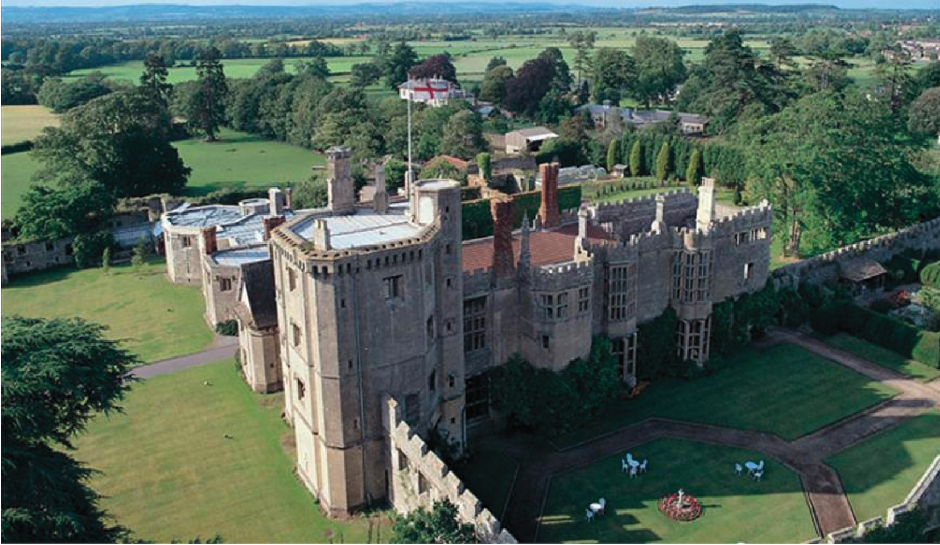
Thornbury Castle
Hotel
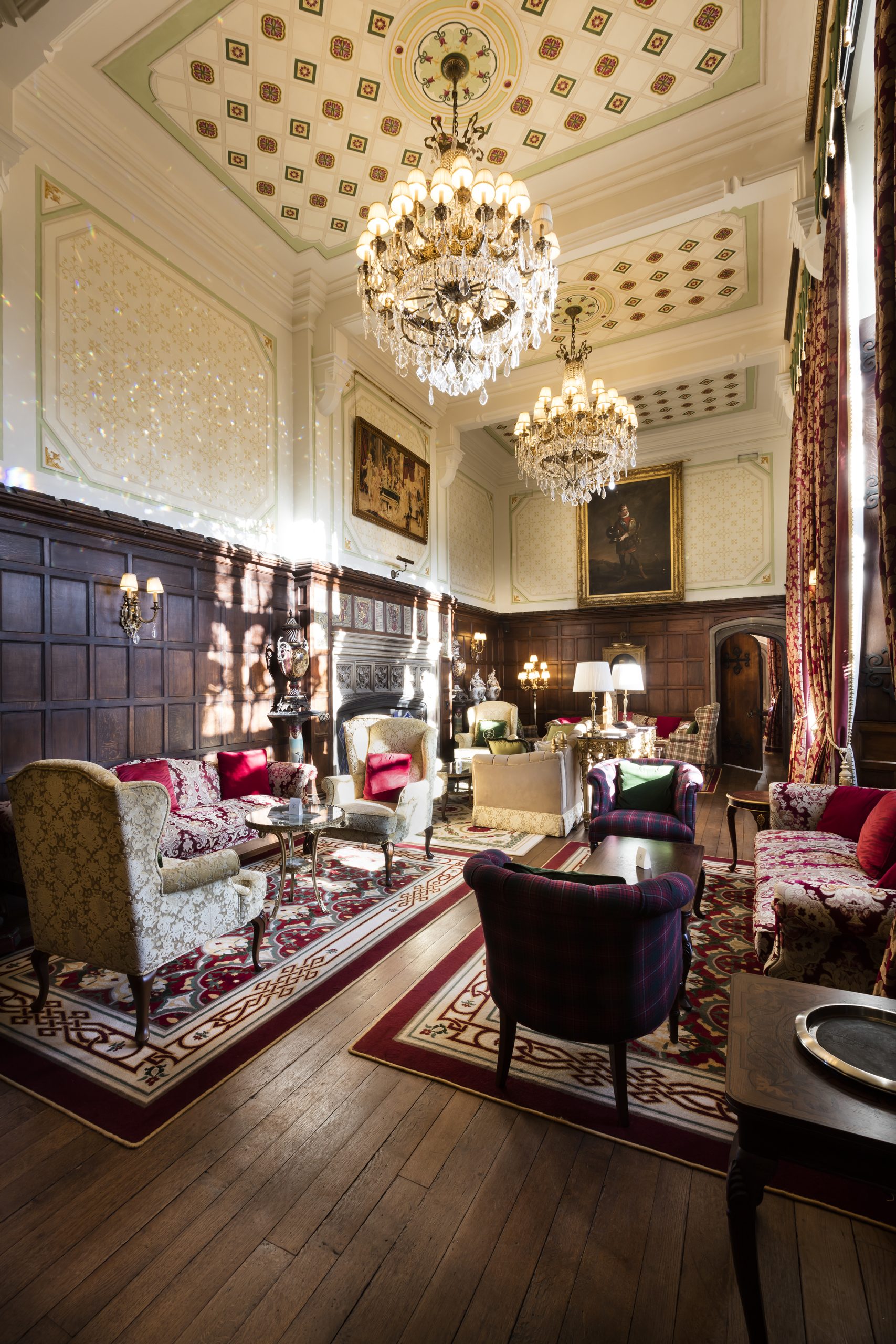
The Project: Built in 1511 as an extravagant country retreat by Edward Stafford, 3rd Duke of Buckingham, Thornbury Castle has played host to many Kings and Queens during its time. Top of the royal guest list were Henry VIII and Anne Boleyn, who spent a ten-day belated honeymoon there in 1535, two years after they were married as part of their ‘Royal Progress Tour’.
The King coveted the castle and took possession when Edward Stafford was conveniently found guilty of treason and executed – the estate was confiscated and remained part of the Crown Estate until 1554, when it was given back to the Stafford family. The castle also became the residence of Princess Mary, daughter of Henry VIII and Catherine of Aragon, which enabled her to get away from her father’s court during her teen years.
Populated throughout history with both regal and wealthy guests, Thornbury Castle, a Grade 1 listed building, became a luxury hotel in 1966, and remains the only Tudor Castle in the UK operating as a hotel and restaurant.
The hotel has 27 bedchambers, fifteen of them featuring sumptuous four-poster beds, decorated using traditional materials and artisan design to create a unique regal experience. The castle hotel boasts six deluxe suites, including the recently restored Henry VIII Suite – the actual room where the King and his Queen, Anne Boleyn stayed during their ten-day royal tour. Along with the newly named ‘Catherine of Aragon Tower Suite,’ extravagant Tudor Hall and dining room, Thornbury Castle Hotel encourages guests to immerse themselves in the Tudor high-life.
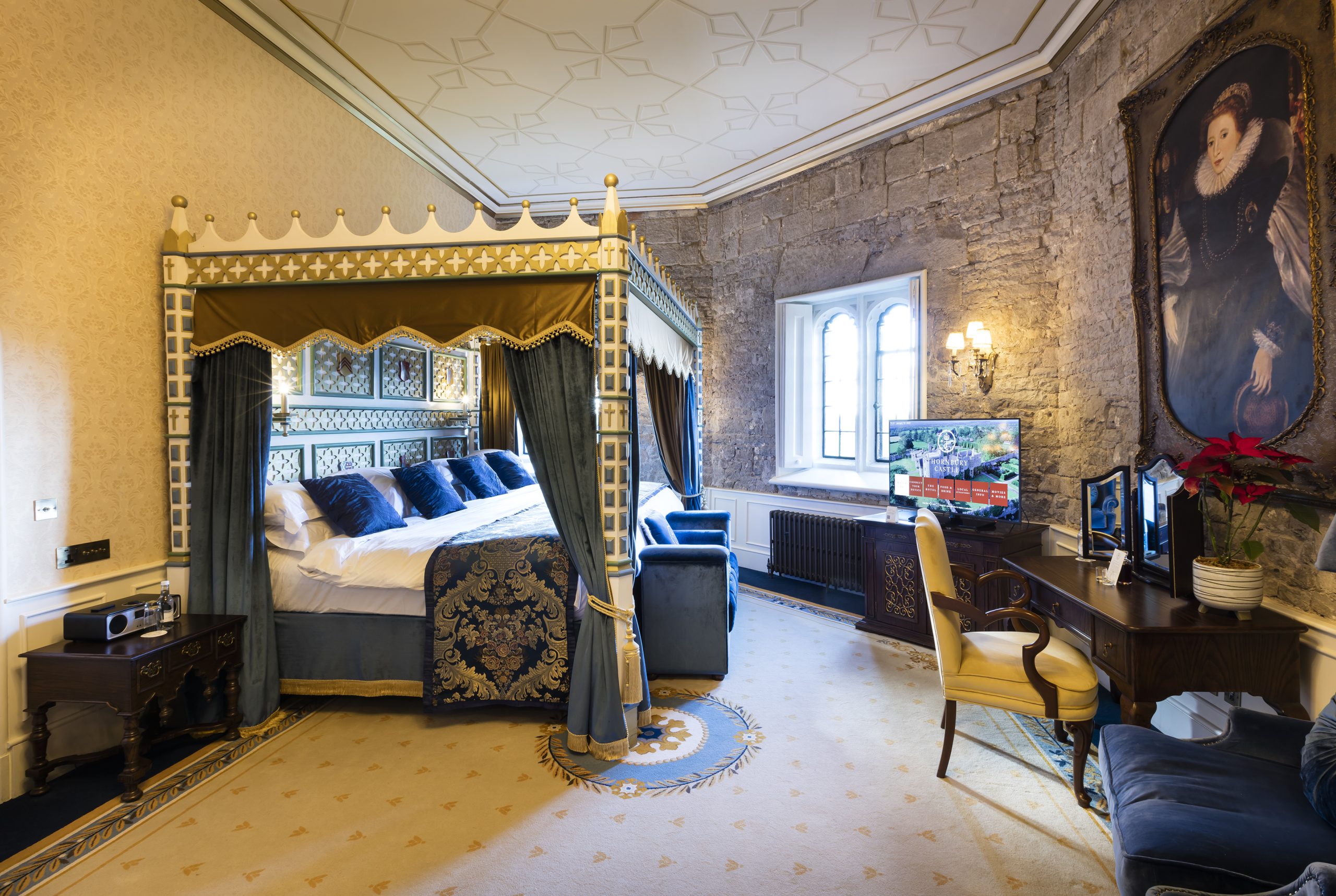
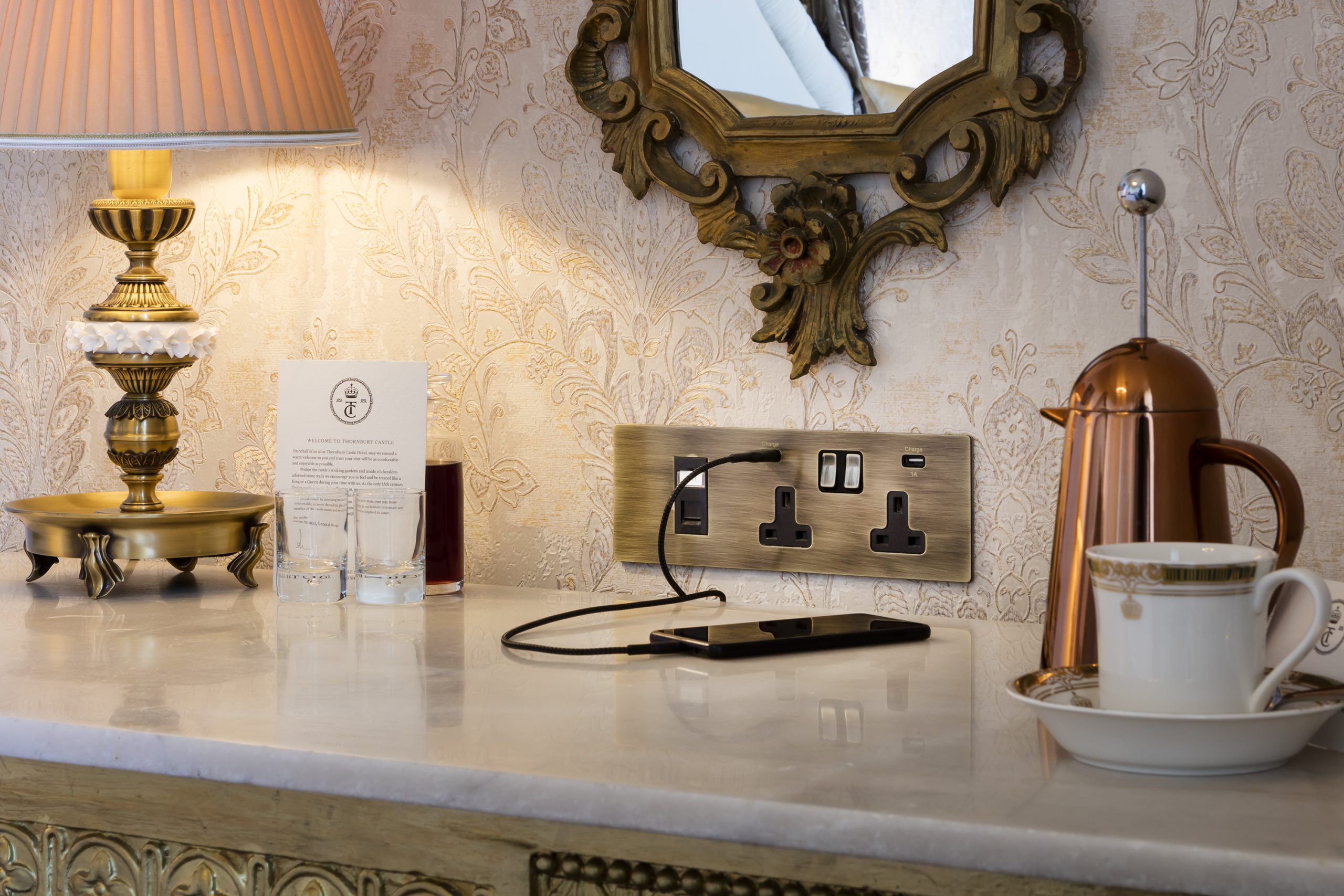
The Brief: Under new ownership, the hotel embarked on a multimillion-pound refurbishment program to channel 1520s Tudor grandeur with 2020s contemporary hospitality. Due to its historic significance, all works commenced under the stewardship of Historic England. To meet the upgrade conditions to the electrical and lighting system, project architects, Childs Sulzmann needed to deliver a solution that used much of the building’s existing infrastructure including: using existing wire ways; fitting new wiring accessories within existing recesses in the wooden skirting where possible; using existing wire chases and leaving the original 1500s stonework untouched.
A sumptuous bed is the centrepiece of each room, and it was decided guests should naturally be able to control the room lighting from the bedside position – at the simple flick of a switch. The design and finish of all wiring accessories needed to complement the rich Tudor décor. USB charge points, a modern-day must-have, needed to be incorporated into the final design. It was essential that this 21st century technology blended seamlessly within the 16th century luxurious surroundings.
The Solution: With 24-carat gilding used throughout the castle hotel together with gold finished tapestries, carpets, and Tudor-styled soft furnishings in many rooms and hallways, the decision to complement these with Antique Brass finished wiring accessories was not a difficult one. Electrical contractor, Electrio Limited, undertook all of the installation work and invited Hamilton to the project. Hamilton’s popular Hartland collection, with its slim, sleek profile was the ideal box-fix design to harmonize with the ornate brass bedside lamps and dark wood panelling.
The desired bedside lighting control was achieved with custom-made plates from drawings supplied by the project architects, Childs Sulzmann. The plate functionality included control of the room chandelier, table lamps and beside lamps within each room, plus a single power socket with 2.1A USB port for charging a smart device.

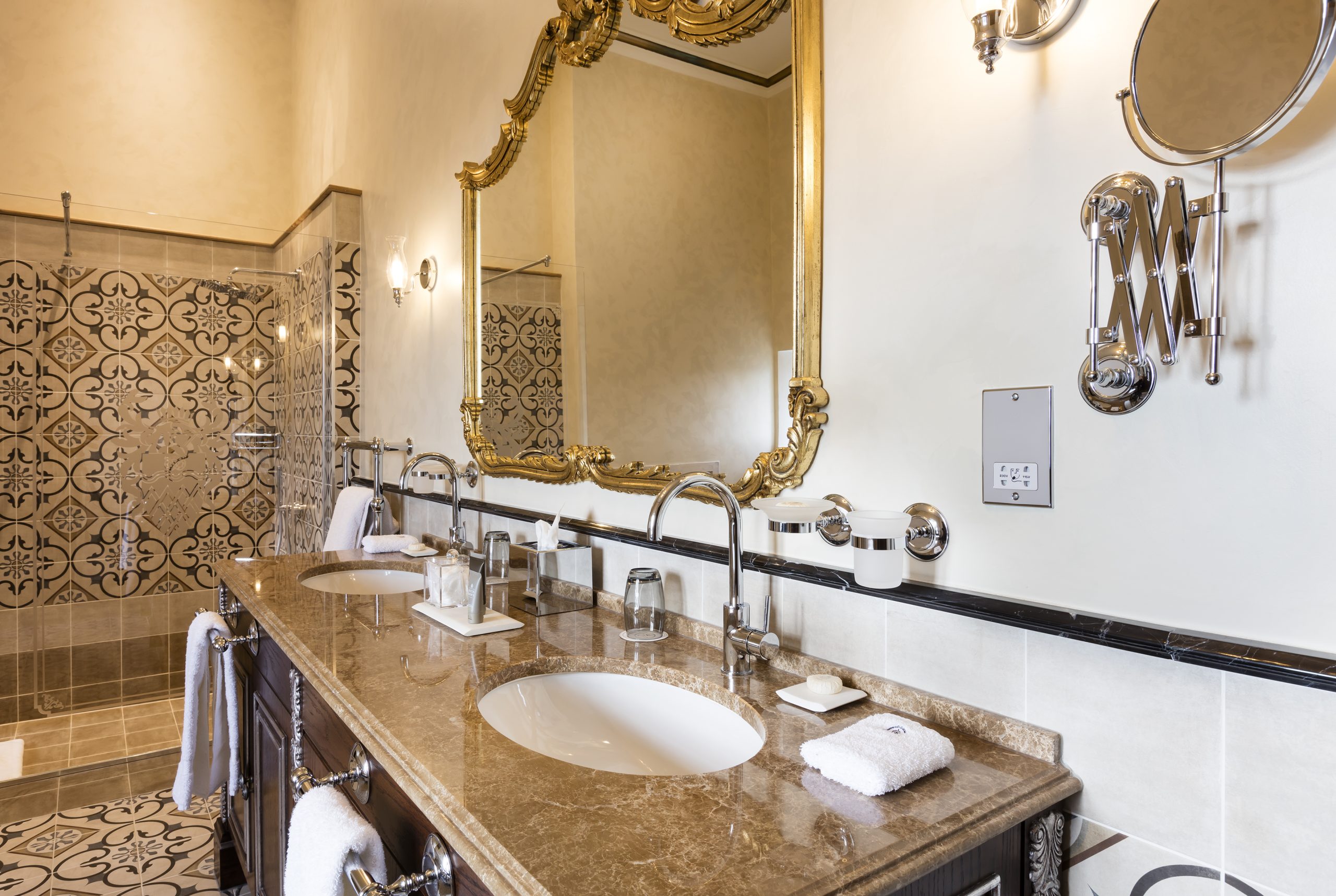
Sheer CFX was selected as the ideal design; a very flat plate with concealed fixings that sits almost flush to the wall, and again finished in Antique Brass with Black inserts. All three light sources are controlled with 3-Gang Toggle Switches – a retractive toggle for each light source – the perfect choice in a Tudor castle because they discreetly accentuate the period feel. To ensure ease of use by the guest, the function of each switch was clearly etched on the plate.
In some of the bedchambers, such as The Prince Arthur, the lavish dark wood bedhead is positioned up against the original stone wall. To meet conservation regulations, the custom-made plates were fixed to stained oak panels that were then affixed direct to the bedhead. When installing new accessories to original skirting board, the old recess was used wherever possible.
The Results: The meticulous attention-to-detail delivered throughout this project by all concerned has contributed towards creating a totally unique guest experience of authentic Tudor hospitality. Candle holders would have replaced the decorative wiring accessories back in the day, yet nothing looks out of place. Hamilton’s expertise at delivering bespoke solutions that integrate both seamlessly and sympathetically within a ‘heritage’ project proved invaluable throughout this project.
Tony Long, Project Manager, Electrio Limited said: “I’ve worked with Hamilton numerous times and have always been impressed with the quality of work they bring to a project. Knowing Hamilton’s ability, and I must say willingness to take on a brief for short run custom-made plates, sets them apart from other companies. A British manufacturer working on a very British project, it couldn’t have been a better fit – the dependable and trusted partner you need when working to such exacting standards.”